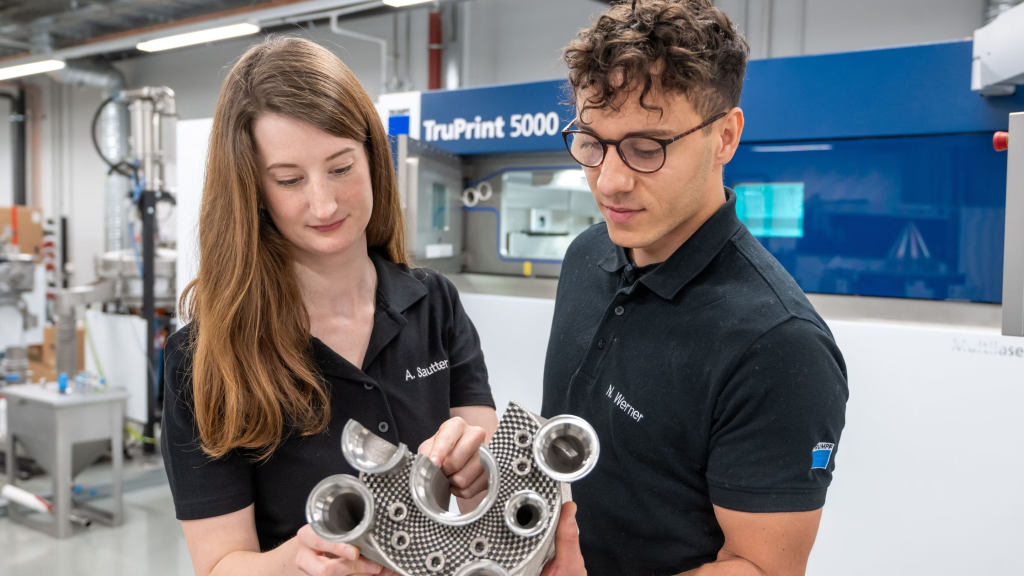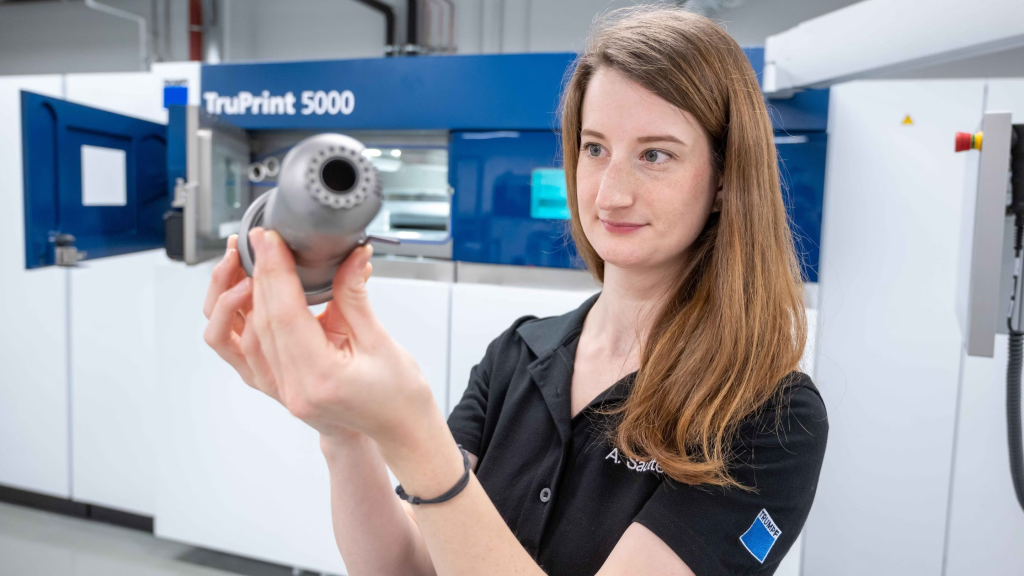3D printing and laser technology from German machine tool manufacturer TRUMPF is helping the aviation and aerospace industries reduce greenhouse gasses, and produce more environmentally sustainable aircraft.
The company claims that their offerings allow manufacturers to save weight during production, and produce more efficient engines. This technology is said to be key in growing efforts to improve sustainability within aerospace and aviation.
TRUMPF demonstrated its 3D printing and laser technology at the 2023 Paris Air Show.
Ultimately TRUMPF are confident that their additive technology will enable the future production of electric aircraft, further improving sustainability in this area.
“Laser technology and 3D printing are key technologies for manufacturing sustainable aircraft. With technology and know-how from TRUMPF, the aviation industry will be able to put electric-powered airplanes and air cabs in the air in the near future,” claims Bannmüller.
Improving sustainability in the Aviation industry
Increasing sustainability in the aviation industry is certainly a key issue at the moment. The majority of aircraft manufacturers and suppliers are working to produce climate-friendly aircraft. Indeed, many companies are already working to conceptualize the electrification of aircraft engines.
It is vital for aviation manufacturers to develop batteries and electric motors that are lightweight, safe and reliable. This is where TRUMPF comes in. The company asserts that their expertise and experience in additive manufacturing automotive electrical devices make them well suited to this task.
“Our experience in manufacturing electric drives and batteries in the automotive industry can be transferred to many areas of aviation. With our manufacturing technology, we can make an important contribution to the decarbonization of aviation,” says Bannmüller.
Additionally, TRUMPF technology is said to benefit the aviation industry when it comes to maintenance. For instance, rather than purchasing new engine blades, aviation companies can repair existing blades using TRUMPF’s laser cladding (LMD) technology.
During LMD, a laser is used to create a molten pool on the surface of the engine blade. Simultaneously, metal powder is added and precisely melted according to the desired shape. According to TRUMPF, repairing cost-intensive components can save up to 80% in costs compared to purchasing new ones.

TRUMPF technology and aerospace applications
Beyond aviation, TRUMPF works with many OEMs and suppliers in the wider aerospace industry. According to TRUMPF, their laser cutting technologies are frequently used by aerospace manufacturers to cut and weld metal alloys for the production of efficient rockets and thrusters. Equally, TRUMPF 3D printers are also utilized for the production of engines and thrusters that are both light and efficient.
“TRUMPF stands by the aerospace industry as a reliable partner with its manufacturing know-how,” claims Bannmüller. “The product life cycles in the aerospace industry are very long. Here, we support our customers for many years with service and spare parts for our machines.”

Additive manufacturing and sustainability
Sustainability is a key focus within the current 3D printing industry. Numerous companies are employing additive technology to reduce their carbon footprint and create more circular supply chains.
For instance, just last month it was announced that North Carolina-based titanium developer IperionX had agreed to supply Ford with 100% recycled low-carbon titanium. This partnership forms part of Ford’s ongoing efforts to reduce their carbon footprint, having committed to achieve carbon neutrality by 2050.
Notably, IperionX’s titanium can be fully recycled at the end of the product’s life-cycle. This improves sustainability, and allows for a fully circular, low-carbon supply chain. According to IpeionX, this is not possible with other commercially available titanium production processes.
Elsewhere, sustainability was a key theme during last year’s Formnext trade show. Industrial manufacturing firm Siemens and powder bed fusion (PBF) 3D printer developer EOS both debuted sustainable 3D printing applications at the show.
Siemens demonstrated how using its NX for AM digital process chain and Product Carbon Footprint Calculator can cut the mass of an automotive handling bot’s grippers by 64%. This is said to reduce the gripper’s CO2 footprint by 82%.
On the other hand, EOS introduced PA 2200 CarbonReduced, a material developed using an efficient production process, lowering its carbon footprint. PA 1101 ClimateNeutral was also debuted. This material has a smaller carbon footprint than petrol polymers, and is shipped with certification proving its carbon-offsetting credentials.
Subscribe to the 3D Printing Industry newsletter to ensure you keep up with the latest 3D printing news. You can also follow us on Twitter, like our Facebook page, and subscribe to the 3D Printing Industry Youtube channel to access more exclusive content.
Are you interested in working in the additive manufacturing industry? Visit 3D Printing Jobs to view a selection of available roles and kickstart your career.
Featured image shows a thruster produced using TRUMPF additive manufacturing technology. Photo via TRUMPF.


